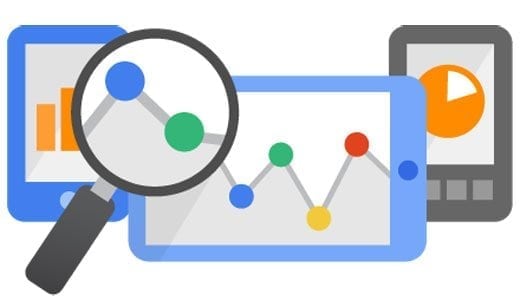 Reading Time: 3 minutes
Reading Time: 3 minutesWhen some business owners think of analytics, they cringe. They think of analytics as the tools that penalize their websites if the content is not good or if keywords don’t generate traffic. Thus, business owners associate analytics with lack of clients and revenue. However, analytics do not deserve this negative reputation. Business owners can glean many positive opportunities from analytics. With the onset of 2017 comes more technological change, an increase in existing opportunities, and brand new opportunities.
How Analytics Work
Every analytics tool is different, but many have some of the same features. Google Analytics is a popular choice. Google Analytics is made up of three parts – JavaScript coding, a data collection service, and a processing engine. The JavaScript code goes on each page of your website. It tracks each visitor’s browser and collects information, such as the user’s operating system. The JavaScript code does not analyze visitors’ searches or tell you much about individual users. However, it does let you know visitors are on your site, which helps you analyze traffic.
Google Analytics’ data collection service takes the information JavaScript collected and appends it to a query string. Each query string goes into its own file, which users can request at any time. The data collection service is a slightly more personalized part of analytics. With it, you can find out which files users are requesting the most and therefore, which queries are most popular. This information helps you update your website content to serve the largest number of users.
If desired, you can store your own copies of every data collection tracking request. Turn them into interface reports using software like Angelfish to give yourself bi-monthly, monthly, or weekly updates. Depending on how often you update content, these reports can be more or less frequent.
The last step of Google Analytics and similar services involves sending information through the processing engine. The processing engine takes every type of data you have – query strings, applies, filters, config settings, and others – and makes it accessible in your account. Using the processing engine is the most specific way to track visitor data. Data is processed every few hours. Although you might not know the name, product preferences, and mailing information of every website visitor, processing engines can make these easier to locate.
Great Analytics Opportunities
When you know how to interpret analytics, you can use them to reach the people who visit your brick-and-mortar business or website. For instance, a tool like Google Analytics takes the guesswork out of determining your target and ideal audiences. As noted, analytics will tell you who is visiting your website and when, and what they are searching for. If one of your most frequently used key phrases is weak, analytics will help you get rid of it and replace it with something stronger.
Additionally, analytics help you update your content for specific audiences. Maybe you started with a business geared toward students looking for help writing college essays. However, you find much of your traffic comes from non-traditional students in night school, or people going to school online while working shifts. Armed with this data, you can update your content so it contains tips on pacing yourself during an essay exam or putting thoughts together coherently after a long shift.
Analytics not only help business owners reach people, but also make it easier to form business plans and goals. Prospective business owners are asked what their plans and goals are as soon as they share their ideas. They might have plenty of data and an idea for a target audience, but may not know how to use that data to their advantage.
Miscommunications between members of a business can also keep goals from being met. However, if everyone accesses and interprets the same set of analytics, measurable and reachable goals will fall into place.
Analytics helps business owners interpret other software – such as customer relationship management (CRM) – as well. In the past, companies struggled to understand CRM data and source it correctly. They also struggled because unstructured data, such as conversations with customers, was difficult to source and interpret. Analytics use all forms of data and sources it in easily accessed places. For instance, customer feedback on your website can be stored in one easily interpreted database. In a matter of minutes, you can find out if customers are struggling with your website because it loads too slowly, there are too many ads, or links are broken. Analytics data lets you fix problems quickly, ask yourself what to do to prevent them next time, and take those measures in real time.
Is Analytics Risky?
Yes, it can be, which is why some executives were leery of analytics in the past. However, the correct IT support and employee training offsets the expense, and benefits far outweigh the risks. Train your IT department to work with big analytics, using small steps. Do not expect the department to interpret many kinds of data right away. Instead, prioritize your data. Put the most important data in analytics first, and synchronize it with overlapping data. This prevents you from losing information and lets you know where data gaps exist. Eventually, the transition to full analytics will become seamless.




